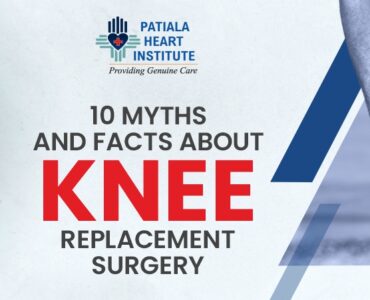Knee pain in youth refers to discomfort or soreness experienced in the knee joint among individuals typically aged between 10 to 19 years old. It encompasses a range of sensations, including dull aches, sharp pains, stiffness, or swelling, that may affect one or both knees. This discomfort can arise from various causes, including overuse injuries, growth-related conditions, ligament injuries, or underlying medical conditions. Knee pain in youth can significantly impact daily activities, mobility, and quality of life, making it essential to address and manage promptly.
Understanding the common triggers of knee pain in youth is crucial for several reasons. Firstly, it allows individuals, parents, coaches, and healthcare professionals to recognize potential risk factors and take proactive measures to prevent injuries and promote knee health. By identifying the underlying causes of knee pain, individuals can implement targeted interventions, such as modifying activity levels, adopting proper warm-up and cool-down routines, and seeking appropriate medical care when necessary.
Anatomy of the Knee:
The knee joint is one of the largest and most complex joints in the human body, connecting the thigh bone (femur) to the shin bone (tibia). It also includes the smaller bone in the lower leg, the fibula. The knee joint is composed of several key structures:
Bones: The knee joint consists of three bones: the femur, the tibia, and the patella (kneecap). The femur forms the top portion of the knee joint, while the tibia forms the lower portion. The patella is a small bone in front of the knee joint, protecting it and providing leverage for the quadriceps muscles.
Ligaments: Ligaments are tough bands of connective tissue that stabilize the knee joint. The four primary ligaments of the knee include the anterior cruciate ligament (ACL), posterior cruciate ligament (PCL), medial collateral ligament (MCL), and lateral collateral ligament (LCL).
Cartilage: The knee joint contains two types of cartilage: articular cartilage and meniscus. Articular cartilage covers the ends of the femur, tibia, and patella, providing a smooth, gliding surface for movement. The meniscus is a C-shaped piece of cartilage that acts as a shock absorber between the femur and tibia, cushioning the joint and enhancing stability.
Muscles and Tendons: The muscles surrounding the knee joint play a crucial role in movement and stability. The quadriceps muscles at the front of the thigh straighten the knee, while the hamstring muscles at the back bend the knee. Tendons connect muscles to bones and help transmit force across the joint during movement.
Functions of the Knee Joint: The knee joint performs several essential functions that facilitate movement, stability, and weight-bearing:
Flexion and Extension: The knee joint allows for flexion (bending) and extension (straightening) of the leg, which is essential for activities such as walking, running, and climbing stairs.
Weight Bearing: The knee joint supports the body’s weight during standing, walking, and other activities. It distributes forces evenly across the joint to minimize stress and prevent injury.
Stability: Ligaments, muscles, and tendons work together to stabilize the knee joint, preventing excessive movement or instability during physical activities.
Shock Absorption: The cartilage and meniscus within the knee joint act as shock absorbers, dissipating forces and reducing impact during movements such as jumping or landing.
Common Triggers of Knee Pain
Overuse Injuries:
Sports-related Activities:
- Participation in high-impact sports such as basketball, soccer, tennis, and running can lead to overuse injuries in the knee joint. Activities that involve sudden stops, pivoting, or jumping place repetitive stress on the knee structures, increasing the risk of injury.
- Athletes may experience knee pain due to conditions like runner’s knee (patellofemoral pain syndrome), jumper’s knee (patellar tendinitis), or stress fractures caused by repetitive impact.
Repetitive Movements:
- Repeated movements or activities involving bending, kneeling, or squatting can strain the muscles, tendons, and ligaments surrounding the knee joint. Continuous stress on the knee from activities like kneeling during gardening or lifting heavy objects can lead to overuse injuries and subsequent pain.
Growth-related Conditions:
Osgood-Schlatter Disease:
- Osgood-Schlatter disease is a common growth-related condition that affects the area just below the kneecap where the patellar tendon attaches to the shinbone. It commonly occurs in adolescents during periods of rapid growth and physical activity.
- Symptoms include knee pain, swelling, and tenderness, particularly during physical activities such as running, jumping, or kneeling.
Sinding-Larsen-Johansson Syndrome:
- Sinding-Larsen-Johansson syndrome is another growth-related condition characterized by inflammation of the patellar tendon at its insertion point on the lower front of the knee. It typically affects children and adolescents during periods of rapid skeletal growth.
- Symptoms include anterior knee pain, tenderness, and swelling, particularly with activities that involve jumping or running.
Patellofemoral Pain Syndrome:
- Patellofemoral pain syndrome, or runner’s knee, is a common condition characterized by pain around or behind the kneecap (patella). It often occurs due to overuse, muscle imbalances, or abnormal patella tracking within the knee joint during movement.
- Symptoms include dull, aching pain around the kneecap, particularly with running, squatting, or climbing stairs.
Ligament Injuries:
Anterior Cruciate Ligament (ACL) Tears:
- ACL tears are prevalent knee injuries, often occurring during sports or activities that involve sudden changes in direction, twisting motions, or direct impact to the knee. ACL tears can range from partial to complete tears and may require surgical intervention.
- Symptoms include sudden onset of severe pain, swelling, instability, and difficulty bearing weight on the affected knee.
Medial Collateral Ligament (MCL) Injuries:
- MCL injuries are typically caused by direct blows to the outer side of the knee or excessive force applied to the inner side of the knee joint. Sports-related collisions falls, or twisting motions can lead to MCL sprains or tears.
- Symptoms include pain, swelling, tenderness along the knee’s inner aspect, instability, or difficulty with weight-bearing activities.
Risk Factors for Knee Pain in Youth:
Age and Growth Spurts:
- Youth experiencing rapid growth spurts, typically during puberty, are at increased risk of knee pain and musculoskeletal issues. During rapid growth, bones, muscles, tendons, and ligaments may grow at different rates, leading to biomechanical imbalances and increased stress on the knee joint.
- As bones lengthen and muscles adapt to new proportions, the alignment of the lower limbs may be temporarily altered, increasing the risk of conditions such as Osgood-Schlatter disease and Sinding-Larsen-Johansson syndrome, which affect the knee area.
Participation in Sports and Physical Activities:
- Engaging in sports and physical activities is essential for youth development but also poses a risk for knee pain and injuries. Sports that involve repetitive movements, high-impact activities, and sudden changes in direction can place excessive stress on the knee joint, leading to overuse injuries, ligament sprains, and other musculoskeletal problems.
- Participation in contact sports, such as football, basketball, and soccer, increases the risk of traumatic injuries, including ACL tears and MCL sprains, due to collisions, falls, and abrupt movements.
Obesity and Excess Weight:
- Obesity and excess weight place significant stress on the knee joint, increasing the risk of knee pain and musculoskeletal problems in youth. Excess body weight exacerbates the load-bearing demands on the knee during weight-bearing activities, such as walking, running, and jumping, leading to accelerated wear and tear on the joint structures.
- Obesity is also associated with metabolic and inflammatory changes that can exacerbate knee pain and contribute to the development of chronic conditions such as osteoarthritis in later life.
Prevention Strategies:
Proper Warm-up and Cool-down Techniques:
- Proper warm-up exercises before physical activity help prepare the body for movement by increasing blood flow to muscles, improving flexibility, and reducing the risk of injury. Dynamic stretches, light jogging, and mobility exercises are effective warm-up techniques.
- Cool-down exercises after activity help gradually lower heart rate and prevent muscle stiffness. Static stretches and gentle movements can aid muscle recovery and promote flexibility.
Strengthening and Flexibility Exercises:
- Regular strength training exercises targeting the muscles around the knee joint, including the quadriceps, hamstrings, and calf muscles, help improve joint stability and reduce the risk of injury. Exercises such as squats, lunges, leg presses, and calf raises strengthen the muscles supporting the knee.
- Flexibility exercises like yoga and stretching routines help maintain joint mobility and muscle elasticity. Focus on stretching the quadriceps, hamstrings, hip flexors, and calf muscles to improve flexibility and prevent muscle imbalances.
Maintaining Healthy Body Weight:
- Maintaining a healthy body weight is essential for reducing the risk of knee pain and musculoskeletal problems. Excess weight increases stress on the knee joint during weight-bearing activities, increasing the risk of injury and accelerating joint degeneration.
- Adopting a balanced diet rich in fruits, vegetables, lean proteins, whole grains, and regular physical activity can help achieve and maintain a healthy body weight. Incorporating mindful eating habits and portion control can support weight management goals and promote overall health and well-being.
Conclusion
Remember, investing in knee health today lays the foundation for a vibrant and pain-free tomorrow. By nurturing and caring for our knees, we empower ourselves to pursue our passions, achieve our goals, and thrive in all aspects of life.
Discover exceptional orthopaedic specialists in Patiala, dedicated to restoring mobility and improving lives. Our team specializes in cutting-edge robotic knee replacement surgery, offering precise and personalized treatment for knee conditions. Whether considering knee replacement or robotic TKR surgery, trust our experts for comprehensive care and optimal outcomes.
Experience the difference with Patiala Heart Hospital’s full knee replacement services. Take the first step towards pain-free living and schedule your consultation today!







